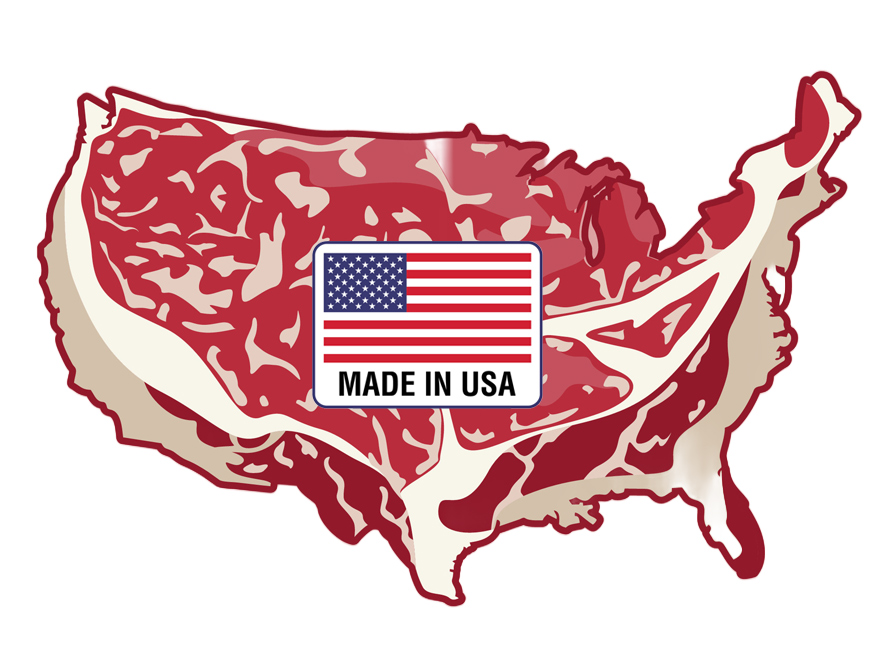In today's increasingly food-conscious world, consumers expect a label to mean what it says—including the…
Farming’s Bitter Pill: Has the FDA flouted its own evidence about the safety of farm antibiotics?
A damning new report from the Natural Resources Defense Council (NRDC) reveals that our Government has been ignoring the very real risks to public health from routine antibiotic abuse in intensive livestock farming.
According to the NRDC’s new report, Playing Chicken With Antibiotics, the U.S. Food and Drug Administration (FDA)—whose key remit it to protect public health—permitted the nontherapeutic use of 30 medicinally important antibiotics, including 18 rated as “high risk” to human health, on industrial farming operations despite knowing this could pose a direct threat to human health through the development of antibiotic resistant bacteria. It makes truly somber reading for anyone concerned about future public health—and the independence of our Government agencies from vested corporate interests.
The NRDC obtained the internal FDA documents through a Freedom of Information Act (FOIA) lawsuit, which include safety reviews of 30 drugs in the penicillin and tetracycline antibiotic classes carried out between 2001 and 2011—drugs that are considered important to human medicine. According to the NRDC, the FDA’s internal scientific reviews found that 18 of the 30 antibiotic feed additives could pose a “high risk” of exposing humans to antibiotic-resistant bacteria through the food supply. The documents also reveal there was inadequate data for the FDA’s own reviewers to determine the safety of the other 12 drugs, so their safety still effectively remains unproven. In addition, the FDA reviewers concluded that at least 26 of these feed additives did not even satisfy the safety standards set by FDA back in 1973. Based on the findings of the FDA’s own scientific reviewers, the NRCD claims that it’s unlikely any of the 30 drugs would be approved as new additives for nontherapeutic livestock use under current FDA guidelines if they were submitted today.
Why does this all matter? In the U.S., we currently use more antibiotics per pound of meat produced than any other nation in the world. A staggering 80 percent of all antibiotics produced in the U.S. are used on food-producing animals for nontherapeutic purposes—in other words, these drugs are not being used to treat individual sick animals, but to stop the billions of chickens, cattle, and pigs we raise intensively in overcrowded, stressful and unsanitary conditions from succumbing to the inevitable outbreak of disease, as well as to artificially maximize their productivity and growth.
Literally billions of animals confined on intensive farming operations across the U.S. regularly receive routine low or “subtherapeutic” doses of antibiotics in their feed or water—whether they need them or not. The problem is that scientists around the world—including the U.S. Centers for Disease Control and Prevention and the World Health Organization—now emphatically link this routine nontherapeutic use of antibiotics as one of the key causes for the dramatic rise in life-threatening antibiotic-resistant bacteria. So when we get infected with these antibiotic-resistant diseases, there are fewer and fewer options for treatment. Thousands of Americans already die each year from antibiotic-resistant infections and unless we take urgent action the situation is about to get a whole lot worse.
Proponents of intensive farming systems will no doubt point to the FDA’s recent plans to introduce voluntary guidelines on the use of medically important antimicrobials in food animals as evidence of appropriate action to address concerns about the abuse of antibiotics in farming. However, numerous critics have already highlighted the wholesale inadequacies and ineffectiveness of the FDA’s proposals in addressing this public health crisis. Bearing in mind that the FDA first accepted the evidence of a link between antibiotic use in farming and the development of antibiotic-resistant bacteria back in 1977, the voluntary nature of these recent proposals highlights the fact that the FDA has (once again) cowed to industry lobbying. Everyone knows that the intensive farming industry will continue to abuse these life-saving medicines, just under a slightly different guise.
Of course, the tendency for U.S. Government agencies to safeguard Big Ag corporate profits at the expense of wider public interests isn’t anything new. In the kind of farfetched conspiracy-type plot you’d expect to see in a Jason Bourne movie, a devastating report released by the Food & Water Watch in 2013 exposed the unwholesome relationship between Monsanto and U.S. Government officials, revealing how our tax money is being used as part of a concerted and coordinated clandestine global strategy to promote the special interests of the multi-billion-dollar biotech industry. It’s the same old story, time and time again.
But it’s not all doom and gloom. Concerned politicians are seeking to introduce new legislation—the Preservation of Antibiotics for Medical Treatment Act of 2013 (PAMTA)—which would end the inappropriate and indiscriminate use of antibiotics across intensive farming systems in the U.S. PAMTA would ensure that animals with clinical disease could have their suffering relieved, but that routine nontherapeutic uses of antibiotics (for disease prevention and growth promotion) would no longer be permitted.
It’s also vitally important that, as consumers, we send a clear signal to the food industry that the abuse of antibiotics in industrial farming is no longer acceptable. But don’t be fooled into thinking that buying “antibiotic-free” labeled meat is the answer. In most cases, you’re just buying (more expensive) products from the same old intensive farming systems, with a nicer sounding label, while the vast majority of farms continue to supply everyone else with meat produced using routine antibiotics. No, what we need is wholesale change in antibiotic use across all farms, not just a small minority.
Want to make a difference? Call on your representative to support PAMTA and start buying responsibly produced meat and dairy products. For example, farmers using the Animal Welfare Approved (AWA) logo can only use antibiotics responsibly and appropriately to treat individual sick animals—just like in humans. The result? Pain and suffering in farm animals is minimized, the risk of disease is reduced, and the efficacy of antibiotics—for both humans and livestock—is protected. You can find your nearest supplier of AWA-certified foods at www.animalwelfareapproved.us. Or why not ask your local store to start stocking it?



